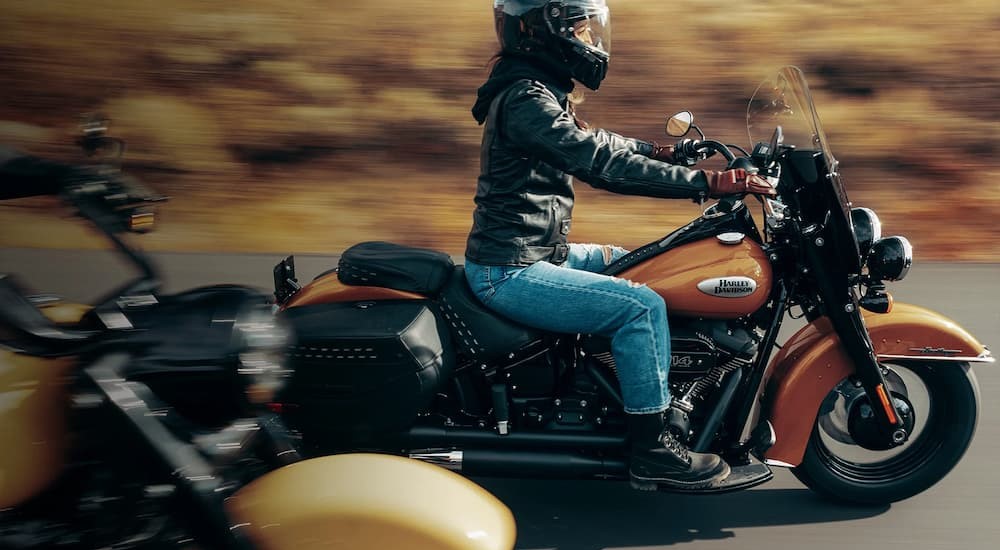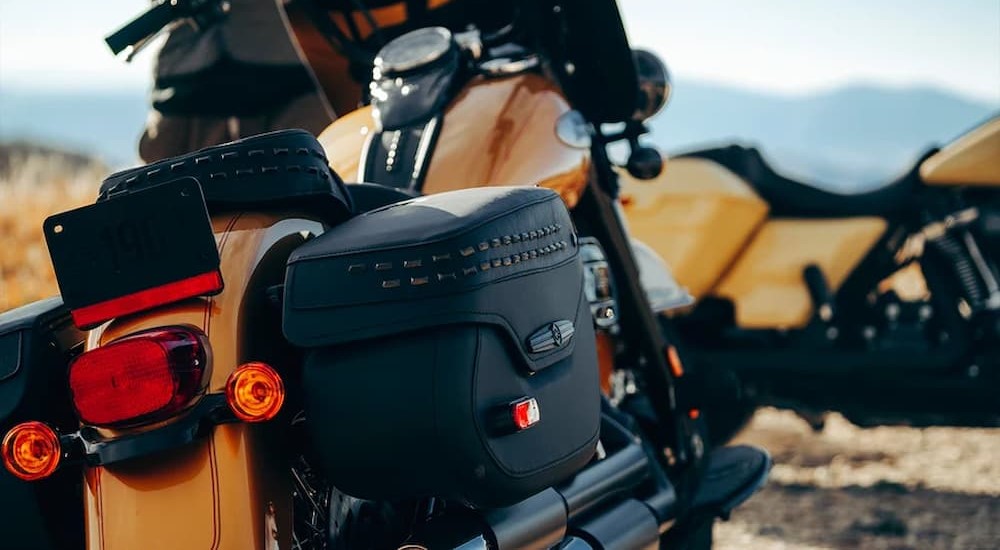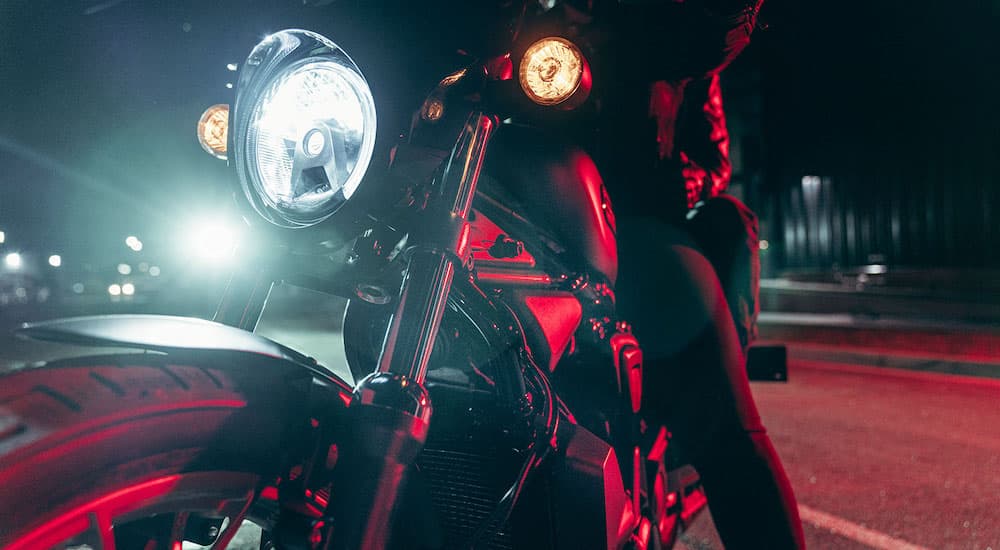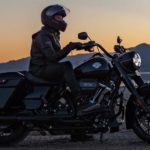Every rider venturing to their local Harley-Davidson store does so with intention. It may be satiating their curiosity to see the newest in the fleet, or exploring their options before making their first, fifth, or umpteenth motorcycle investment. Whatever the intention, there’s no question about the Harley-Davidson reputation and its significance in the industry. As one of the longest continuously-running motorcycle companies in the country, Harley-Davidson is revered from coast to coast.
Harley-Davidson has built its reputation for its customizable powerhouses that serve as blank canvases capable of bringing every rider’s dreams to life. While this customization is integral to the brand, Harley-Davidson doesn’t discount our penchant for speed and thrills in the saddle. Every Harley-Davidson motorcycle delivers as much, courtesy of its V-Twin calling card that provides the brand’s signature “potato potato potato” rumble that begs for attention. It’s a rumble that leads many to the Harley-Davidson lineup, but what’s behind it? It all depends on the bike.
The history of the Harley-Davidson V-Twin engine began a century ago when Harley-Davidson set out to design its engines in-house. The company debuted its first V-Twin in 1909, with the seven-horsepower engine setting the template for the company’s incredible future. While meager by modern standards, the first V-Twin laid the foundation for the Milwaukee Eight and Revolution Max engines that define the current Harley-Davidson fleet. Here’s a closer look at that trajectory, and how the latest V-Twins mark a new chapter in the Harley-Davidson legacy.
Powering Toward the Future: The Road to the Milwaukee Eight and Revolution Max
Competition fuels innovation in the industry, with motorcycle manufacturers like Harley-Davidson and Indian Motorcycle constantly trying to outdo one another and exceed our expectations in the saddle. The rivalry has been a cornerstone of the industry since the early 1900s when Indian Motorcycle introduced its first V-Twin engine in 1905. Harley-Davidson quickly got to work and debuted the Atmospheric V-Twin in 1909, just six years after opening its doors and expanding from a small backyard shed in Milwaukee to a full-blown production plant.
The Atmospheric V-Twin set the template for future V-Twin engines with its air-cooled, 45-degree design. With each successor to that first V-Twin, from the F-Head, Flathead, and Knucklehead to the Panhead, Shovelhead, Evolution, and Twin Cam, Harley-Davidson fine tuned the V-Twin design to deliver more power, improve reliability, heighten performance, and improve the rider’s experience without compromising the engine’s signature rumble. It’s been an intricate balance that’s led to some of the most transformative engines in Harley-Davidson history: the Revolution, Milwaukee Eight, and Revolution Max.
The V-Rod Impact
It’s impossible to showcase the Milwaukee Eight and Revolution Max without looking at a significant milestone in Harley-Davidson history, the transition from an air-cooled to a liquid-cooled V-Twin. That transition came in the new millennium when Harley-Davidson partnered with Porsche to develop a high-performance engine that could satiate any need for speed. The result was the V-Rod, a liquid-cooled drag racing powerhouse with a 60-degree configuration that quickly earned its place in the Harley-Davidson fleet. Coincidentally, it also foretold another chapter in the future of Big Twins in the Harley-Davidson legacy.
Answering the Demand for More Power: The Milwaukee Eight
Named after where it’s built and its eight-valve head configuration, the Milwaukee Eight engine debuted in 2017 as the ninth V-Twin in Harley-Davidson Big Twin history. The purpose behind its design was unquestionable, with Harley-Davidson saying, “Riders asked us to create a new engine designed to enhance their motorcycle touring experience in every way. Those same voices also demanded that we stay true to our legacy and respect the defining elements of a Harley-Davidson V-Twin… With the Milwaukee Eight, a new era of Harley-Davidson power, performance, and innovation has been forged.”
That new era started with the Harley-Davidson Touring models and has since expanded across the lineup. The Milwaukee Eight engines are renowned for producing more horsepower and torque, accelerating faster, managing heat more effectively, and minimizing vibrations. With a richer exhaust note that capitalizes on the iconic Harley-Davidson rumble, the Milwaukee Eight engine is the finishing touch on an already exceptional fleet of bikes.
Behind the scenes, the Milwaukee Eight showcases how Harley-Davidson successfully meets and exceeds rider expectations. The Milwaukee Eight engines have higher displacements, compression ratios, and intake and exhaust flow capacities, which translates to a higher power output. Most notably, unlike the V-Rod, this doesn’t compromise the signature 45-degree V-Twin engine design that Harley-Davidson has used for the last century.
What’s truly impressive is that Harley-Davidson improves on its classic V-Twin by modifying the Milwaukee Eight in several critical ways. The engine’s cooling strategy is more precise, relying on oil or liquid coolant to effectively manage heat and move it away from the rider. Likewise, the engine has a more streamlined design and incorporates rubber-mounted counterbalancers that minimize vibration. The result is extraordinary, improving rider comfort without eliminating the characteristics that give it a Harley-Davidson heartbeat.
Finding a Balance Between Lightweight and Potent: The Revolution Max
While Harley-Davidson is one of the longest-running motorcycle manufacturers in America, the company is still full of surprises, as we see from the debut of the Revolution Max engine on the Pan America 1250 in 2022. “Through its history, Harley-Davidson has embraced technological evolution while respecting the heritage of our brand, with engines that produce real-world performance for real-life riders,” Harley-Davidson recently announced. “The Revolution Max 1250 is a clean-sheet, advanced-design effort that will carry Pan America riders over new horizons with reliability, efficiency, and exciting performance.”
The Revolution Max immediately draws a comparison to the Revolution or V-Rod engine that Harley-Davidson developed with Porsche in the new millennium. However, it shares more than just a name. The Revolution Max has a 60-degree configuration that defies the manufacturer’s extensive reliance on a 45-degree layout. What’s the reason behind yet another transition? Harley-Davidson is looking for the perfect balance, designing an engine that’s both lightweight and potent.
The V-Twin architecture in a 60-degree angle is an intentional transition engineered with the rider in mind. For the Revolution Max, Harley-Davidson makes the engine a structural component of the Pan America’s chassis, which correlates to how the engine is built. The 60-degree layout streamlines the engine’s profile, making it more compact and recentering its mass to improve balance and handling. As a structural component, the engine is also incredibly rigid and lightweight, a balance achieved by its centralized mass, design optimization via finite element analysis, and the widespread use of lightweight materials like magnesium.
The Wave of the Future
Harley-Davidson has an incredible history of Big Twin engines, each of which has served a prominent role in building the brand and establishing its reputation across the industry. These powertrains have provided the heartbeats for every two-wheeled Harley-Davidson powerhouse over the last century, and they’ve made it look effortless. Time and time again, Harley-Davidson has balanced riders’ demands for more power without compromising their comfort in the saddle, or the very rumble that serves as the Harley-Davidson calling card.
The Milwaukee Eight and Revolution Max engines continue that tradition in two distinct ways. The Milwaukee Eight lineup is well established for its reliability, becoming a staple in the Harley-Davidson lineup in 2017 and building on the classic V-Twin design used since the 1900s. In contrast, the Revolution Max looks to the future, with its 60-degree V-Twin layout with dual overhead cams and variable valve timing differentiating it from the Milwaukee Eight. Where one pays homage to the past, the other looks ahead, but both celebrate the incredible Harley-Davidson legacy.
Because of this, choosing between a Harley-Davidson bike with a Revolution Max or Milwaukee Eight V-Twin comes down to personal preference. The Milwaukee Eight is a staple among cruiser and touring bikes, while the Revolution Max is geared toward adventure touring riders who value more versatile performance and higher outputs. Either way, you can’t go wrong. It’s a Harley-Davidson heartbeat designed exclusively to balance your riding needs and deliver the throaty rumble that leaves no question that you’re part of one of the greatest motorcycle legacies of all time.






